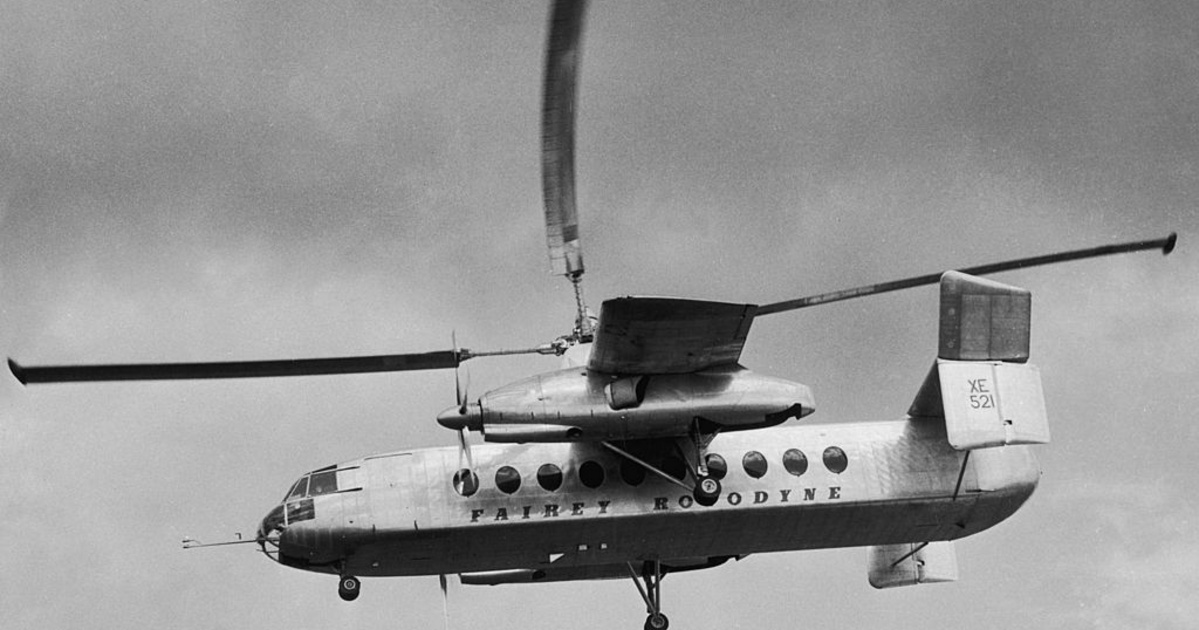The main problem in the 1950s was the principle of operation of the helicopter itself. In a plane lifted by the buoyancy of the rotating rotor blades, tilting the blades themselves creates the traction required to move forward or backward, which further complicates the already complex rotor axis and limits the available velocity. In addition, the large, fast rotor blades also created torque, which was normally balanced by the tail rotor, further complicating the machine’s simple mechanics ever.
Photo: PA Images / Getty Images Hungary
You can say it is Autogero It was one of the first attempts to solve the problem,
If you haven’t been born much earlier than the helicopter itself.
In the early 1920s, Juan de la Cerva created simple airframes that were converted from conventional airplanes, in which a conventional propeller provided traction and buoyancy to the rotor blades that were rotated by the action of the wind. However, this device was only able to land vertically, although a much shorter space compared to conventional aircraft was sufficient for take-off.
However, both devices were distinguished by their relatively small size, as the size of the device was higher than a certain size, and it would have required swinging wings that were not possible at the technological level for this era.
In 1953, British European Airlines (BEA) asked a British aircraft manufacturer called Fairey to design a device capable of takeoff and landing from a position capable of carrying 50 passengers over the medium range. However, given the above expectations, the helicopter was out of the question, so Fairey engineers developed the autogyro system with a very creative solution.
Instead of the motor built into the machine body
Small jet engines mounted at the end of the rotors
They drove the rotor blades, and as soon as the machine gained sufficient height, the motors that drove the conventional propellers, which provided traction, began to work. After one minute, the plane flew fast enough for its tiny wings, as well as air resistance-driven rotors like the autogyro, to produce the right amount of buoyancy.

Fotó: Reg Burkett / Keystone / Hulton Archive / Getty Images Hungary
After the successful testing of a small prototype, the much larger Fairey Rotodyne was built, which still had no dimensions to accommodate fifty passengers.
The 2,800 horsepower and relatively low power consumption of the Napier turbine turbocharged engines were enough to bring single airplanes to record, and in 1959 it even broke the helicopter speed record at 191 miles, or 307 km / h.
After successful tests, Rotuden traveled to Paris this year, touching Brussels, where the flight took 1 hour 36 minutes and 58 minutes. This speed is for various reasons
So far he has not been overthrown,
Although the express train via Csalagút is close.
On sight of success, demands began to flow slowly, but amid the post-war economic woes, the country imposed harsh conditions for further support, including a significant reduction in the noise level of its rotary-end jet engines.

Fotó: Reg Burkett / Keystone / Hulton Archive / Getty Images Hungary
Meanwhile, Fairey, who had been melted down in Westland, had begun developing silencers and, at the airline’s request, developed a final model, the Rotodyne Z, which could accommodate 66 passengers larger than originally planned. Despite gradually approaching the required size with jet engines, the performance of the Napier compact engines was not sufficient.
When they tried to increase performance by using richer fuel mixes, the engine became louder than quieter jet engines. Since the improved version also didn’t live up to expectations, they had to look for a new drive. The Rolls-Royce Tyne 5230 engine under development looked promising, but its development was not complete yet.
The armed forces burning under the influence of nuclear war were not interested in an immature and revolutionary machine. It is characterized by the narrow-mindedness of the British military leadership at the time to be serious
The withdrawal of all conventional aircraft except bombers arose
And equipping the entire air force with missiles and nuclear weapons only.
Rotuden, an engineering feat similar to the Canadian revolutionary Avro Arrow, fell victim to the crazy desire for change in the 1960s, and not just in society. The British government, constantly in need of money, finally decided not to continue funding the development of the engine and machine, and in 1962 halted the project. By then, Rotodyne had carried more than a thousand people in 120 flying hours during 350 takeoffs. Meanwhile, he’s switched 230 times to the automatic and conventional flight profiles without incident – which would still be a huge thing today, let alone fifty years!
The revolutionary plane was dismantled with only a few pieces left.












































